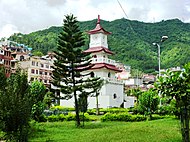
Central Plaza is a 78-storey, 374 m (1,227 ft) skyscraper completed in August 1992 at 18 Harbour Road, in Wan Chai on Hong Kong Island in Hong Kong. It is the third tallest tower in the city after 2 International Finance Centre in Central and the ICC in West Kowloon. It was the tallest building in Asia from 1992 to 1996, until the Shun Hing Square was built in Shenzhen, a neighbouring city. Central Plaza surpassed the Bank of China Tower as the tallest building in Hong Kong until the completion of 2 IFC.
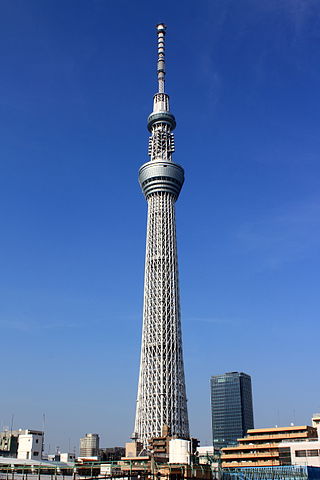
A tower is a tall structure, taller than it is wide, often by a significant factor. Towers are distinguished from masts by their lack of guy-wires and are therefore, along with tall buildings, self-supporting structures.
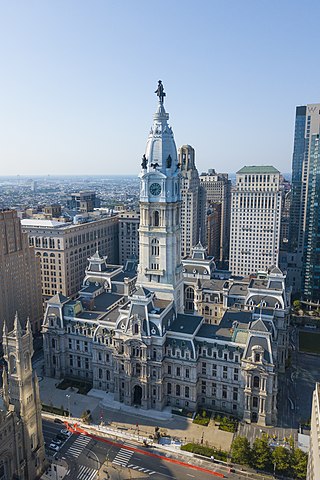
Philadelphia City Hall is the seat of the municipal government of the City of Philadelphia in the U.S. state of Pennsylvania. Built in the ornate Second Empire style, City Hall houses the chambers of the Philadelphia City Council and the offices of the Mayor of Philadelphia.
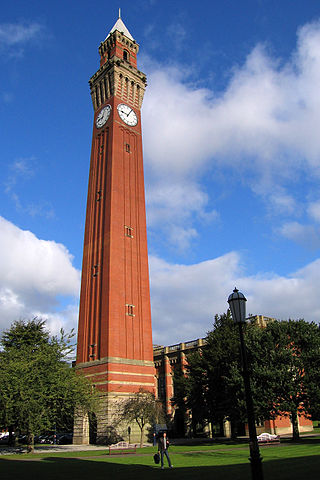
The Joseph Chamberlain Memorial Clock Tower, or colloquially Old Joe, is a clock tower and campanile located in Chancellor's court at the University of Birmingham, in the suburb of Edgbaston. It is the tallest free-standing clock tower in the world, although its actual height is the subject of some confusion. The university lists it variously as 110 metres (361 ft), 99 metres (325 ft), and 100 metres tall, the last of which is supported by other sources. In a lecture in 1945, Mr C. G. Burton, secretary of the University, stated that "the tower stands 329 ft [100 m] high, the clock dials measure 17 ft [5.2 m] in diameter, the length of the clock hands are 10 and 6 ft [3.0 and 1.8 m], and the bell weighs 5 long tons [5.1 tonnes]".
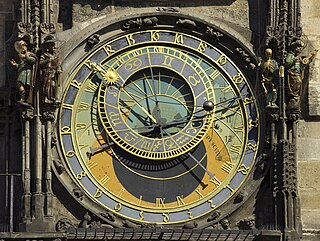
An astronomical clock, horologium, or orloj is a clock with special mechanisms and dials to display astronomical information, such as the relative positions of the Sun, Moon, zodiacal constellations, and sometimes major planets.
The Emirates Office Tower, is a 54-floor office building along Sheikh Zayed Road in the city of Dubai, United Arab Emirates. Connected with the 56-floor Jumeirah Emirates Towers Hotel by a retail boulevard, the two towers form what is commonly referred to as the Emirates Towers complex. The tower has a total structural height of 354.6 m (1,163 ft) and roof height of 311 m (1,020 ft), making it the 55th-tallest building in the world. The Emirates Office Tower One is taller than the neighbouring Jumeirah Emirates Towers Hotel, but has two fewer floors. Construction of the building was completed on 3 November 1999.
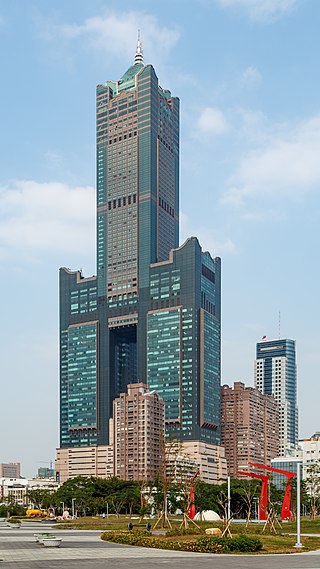
85 Sky Tower, formerly known as the T & C Tower or Tuntex Sky Tower, is an 85-story skyscraper in Lingya District, Kaohsiung, Taiwan. The structure is 347.5 m (1,140 ft) high. An antenna increases the pinnacle height to 378 m (1,240 ft). Constructed from 1994 to 1997 by the now-defunct Tuntex Group, it is the tallest building in Kaohsiung, and the 2nd tallest in Taiwan after the Taipei 101.

The Torre del Mangia is a tower in Siena, in the Tuscany region of Italy. Built in 1338-1348, it is located in the Piazza del Campo, Siena's main square, next to the Palazzo Pubblico. When built it was one of the tallest secular towers in medieval Italy. At 102 m it is now Italy's second tallest after Cremona Cathedral's Torrazzo, the Asinelli tower in Bologna at 97 m being third.

The Clock Towers, is a government-owned complex of seven skyscraper hotels in Mecca, Saudi Arabia. These towers are a part of the King Abdulaziz Endowment Project that aims to modernize the city in catering to its pilgrims. The central hotel tower, which is the Makkah Clock Royal Tower, is the fourth-tallest building and sixth-tallest freestanding structure in the world. The clock tower contains the Clock Tower Museum that occupies the top four floors of the tower.

The Torrazzo is the bell tower of the Cathedral of Cremona, Lombardy, in northern Italy.

A turret clock or tower clock is a clock designed to be mounted high in the wall of a building, usually in a clock tower, in public buildings such as churches, university buildings, and town halls. As a public amenity to enable the community to tell the time, it has a large face visible from far away, and often a striking mechanism which rings bells upon the hours.
The tallest building in the world, as of 2024, is the Burj Khalifa in Dubai. The title of "world's tallest building" has been held by various buildings in modern times, including the Lincoln Cathedral in Lincoln, England, and the Empire State Building and the original World Trade Center, both in New York City.





